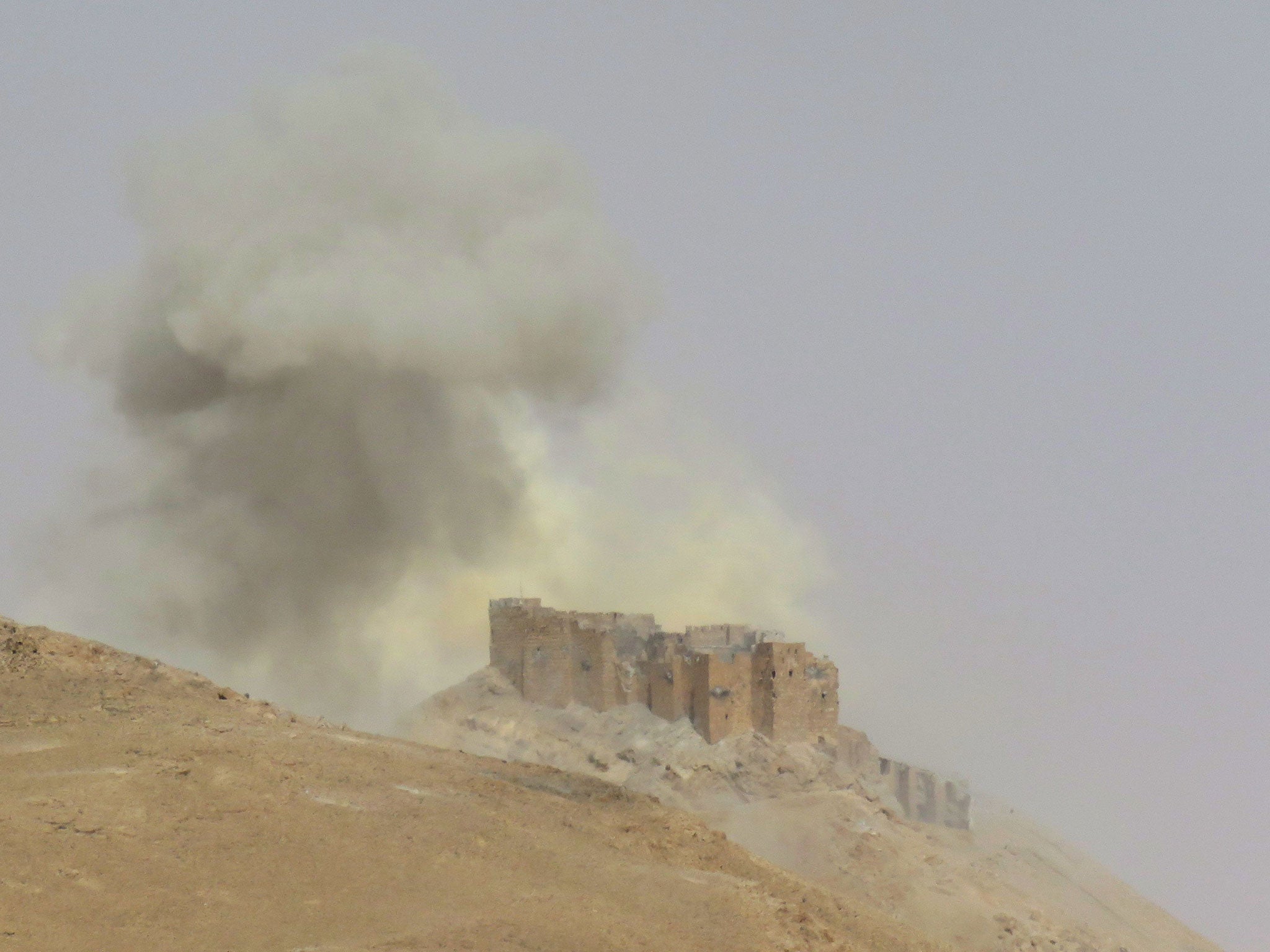Isis 'losing control' of Palmyra as Syrian troops backed by Russian air strikes approach ancient city
The terrorist group used the city's famous monuments as a backdrop for execution videos before blowing them up

Your support helps us to tell the story
From reproductive rights to climate change to Big Tech, The Independent is on the ground when the story is developing. Whether it's investigating the financials of Elon Musk's pro-Trump PAC or producing our latest documentary, 'The A Word', which shines a light on the American women fighting for reproductive rights, we know how important it is to parse out the facts from the messaging.
At such a critical moment in US history, we need reporters on the ground. Your donation allows us to keep sending journalists to speak to both sides of the story.
The Independent is trusted by Americans across the entire political spectrum. And unlike many other quality news outlets, we choose not to lock Americans out of our reporting and analysis with paywalls. We believe quality journalism should be available to everyone, paid for by those who can afford it.
Your support makes all the difference.Syrian forces claim they are close to driving Isis out of the ancient city of Palmyra as Russia pounds militants with waves of air strikes.
Troops loyal to Bashar al-Assad, along with allies from Hezbollah and the Iranian Revolutionary Guards, have reportedly gained control of area around the city’s castle and are attempting to force Isis fighters into retreat.
Syrian state television was hailing progress on Friday but the so-called Islamic State has hit back with its own propaganda videos.

One appears to show Isis militants driving around the deserted town centre, showing the black flag of jihad fluttering over streets littered with rubble, before a fighter gave a speech vowing to defeat the “kuffar” (disbelievers).
The footage was dated on Thursday, when military operations were intensifying, but could not be verified.
The government-owned Syrian Arab News Agency (Sana) claimed the army and “popular defence groups” seized Palmyra Castle on Friday and was edging closer to the city centre.
The 13th century fortification occupies a strategic hill to the west of inhabited areas and the complex of ancient monuments for which Palmyra was famed before they became a backdrop for Isis’ gory execution videos.

“Army units combed the hill after destroying the last hideouts of Isis terrorist organization and dismantled the explosive devices left behind by its members,” Sana reported.
“A number of Isis terrorists were killed, while the rest escaped towards the city, leaving their arms behind.”
The Director-General of UNESCO hailed the “liberation” of the archaeological site, which has seen many of its most precious buildings and artefacts destroyed by Isis.
Irina Bokova called the destruction a war crime and said Palmyra had become a “symbol of the cultural cleansing plaguing the Middle East”, vowing to send inspectors to evaluate the damage as soon as possible.
But an activist from the Palmyra Media Centre told Al Jazeera that the former tourist attraction was still the site of heavy fighting and that most of the city remained under Isis control.
The UK-based Syrian Observatory for Human Rights said clashes continued on Saturday morning around the castle and in the neighbourhoods of al-Motaqaadin and western al-Jam’ia, documenting heavy aerial bombardment.
Images and footage posted online by pro-regime supporters showed attack helicopters and armoured vehicles joining the battle as well as extensive shelling of Isis-controlled areas ahead of an expected ground assault.
A live feed broadcast by the Lebanese Al Mayadeen channel showed smoke rising from the streets as the sound of shooting and artillery fire rang out.
Russia’s defence ministry said it launched 41 sorties between Sunday and Wednesday, hitting “more than 320 terrorists” along with tanks, vehicles, artillery positions and ammunition depots.
State media reported that an unnamed Russian officer was killed when he called in an air strike on himself after becoming surrounded by Isis militants.

Vladimir Putin’s special forces have been on the ground since he launched an intervention in support of the Syrian regime last September, with at least five Russian servicemen killed so far.
The reported gains came after the US targeted several senior leaders including Isis’ top finance officer in air strikes, as coalition operations intensified following the Brussels attacks.
The recapture of Palmyra, which the Islamist militants seized in May 2015, would mark the biggest defeat for Isis in Syria in recent months.
The city, also known as Tadmur, controls routes east into the heartland of territory held by the militants, including the province of Deir Ezzor and the Islamic State's de facto capital of Raqqa.
Syria's antiquities chief, Maamoun Abdulkarim, said driving the terrorists out would be a victory for the whole world.
“After all the tragedy we have suffered in Syria for five years, and the 10 months in Palmyra after it fell...it's the first time we feel joy,” he told Reuters.
“We pray for victory soon, so that the damage is limited. Palmyra, under their control, was the loss of a civilisation.”
The city’s former head of antiquities, Khaled al-Asaad, was publicly beheaded by militants whose body was hung on display as the group started destroying monuments including the Temple of Baalshamin.
Talks are continuing between the US, Russia and other parties aiming at drawing up a blueprint for a political process to end Syria’s brutal civil war.
Join our commenting forum
Join thought-provoking conversations, follow other Independent readers and see their replies
Comments